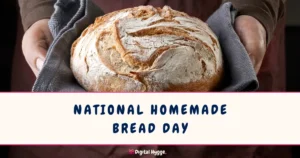National Couscous Day is observed on August 5th to highlight couscous, a staple food with deep roots in North African societies. This day was created by Ainsley Foods to encourage people to learn about couscous and try it in their own meals.
Couscous is made from semolina wheat that is rolled into tiny granules and steamed. It is traditionally prepared in a two-part pot called a couscoussier, where the grains are cooked above a simmering stew. The dish has been a central part of daily life in Algeria, Tunisia, Morocco, Mauritania, and Libya for centuries. While semolina is the most common base, similar methods are used with other grains like millet and sorghum in different regions.
National Couscous Day offers an opportunity to learn about how couscous is made, how it has been used in different societies, and how it continues to be part of everyday meals in many homes around the world.
When Is National Couscous Day Celebrated?
National Couscous Day is celebrated every year on August 5th. Below are the upcoming dates and weekdays for this observance.
| Year | Date |
|---|---|
| 2025 | Tuesday, August 5 |
| 2026 | Wednesday, August 5 |
| 2027 | Thursday, August 5 |
| 2028 | Saturday, August 5 |
| 2029 | Sunday, August 5 |
| 2030 | Monday, August 5 |
The Journey of Couscous Through Time and Place
Although the exact origin of couscous is not known, archaeological evidence shows that cooking vessels similar to couscoussiers were used as early as the 3rd century BCE in present-day Algeria. Historical sources suggest that couscous preparation spread through the Maghreb during the medieval period and was mentioned in several Arabic cookbooks from the 13th century.
Couscous traveled to Europe through trade and migration, particularly during the time of the Berber dynasties and later under French colonial rule. It became widely known in France in the 20th century and is still commonly eaten there today. In parts of Italy, such as Sicily and Sardinia, couscous is prepared using recipes passed down since the time of North African influence in the region.
In 2020, UNESCO recognized the shared knowledge and traditions surrounding couscous by adding it to the Representative List of the Intangible Cultural Heritage of Humanity. This recognition was submitted jointly by Algeria, Morocco, Tunisia, and Mauritania as an example of regional cooperation.
10 Interesting Couscous Facts
What better way to celebrate couscous than with a few fun facts? Here are ten interesting couscous facts that are perfect for sharing on social media:
- One of the Oldest Processed Foods: Couscous is considered one of the earliest processed foods in human history. Its preparation dates back over 1,000 years to the Berbers of North Africa.
- Hand-Rolled from Semolina Wheat: Traditional couscous is made by mixing semolina flour with water and hand-rolling it into tiny granules, which are then steamed in a special two-part pot called a couscoussier.
- Evidence from Ancient Cookware: Archaeologists have found cooking vessels similar to couscoussiers in North African graves from as early as the 3rd century BCE, pointing to the long-standing role of couscous in daily life.
- Friday Meals in Morocco: In many Moroccan households, couscous is served every Friday after midday prayers. This meal often includes vegetables and meat and is shared communally among family members.
- UNESCO Recognition: In 2020, Algeria, Morocco, Tunisia, and Mauritania jointly secured couscous’s inclusion on UNESCO’s list of Intangible Cultural Heritage, honoring the knowledge and traditions tied to its preparation.
- Varieties Beyond Semolina: While couscous is commonly made from semolina wheat, other grains such as millet, sorghum, and barley are used in different regions, especially in sub-Saharan Africa.
- Nutritional Value: Couscous is a good source of plant-based protein and carbohydrates. When paired with legumes or vegetables, it can form a complete and nourishing meal suitable for vegetarian and vegan diets.
- Israeli Couscous Was Invented in the 1950s: Also known as ptitim, Israeli or pearl couscous was created during a rice shortage in Israel. Unlike traditional couscous, it is toasted and has a round, pasta-like shape.
- Referenced in Medieval Cookbooks: Recipes for couscous appear in several 13th-century Arabic cookbooks, including Kitab al-Tabikh and Fadalat al-Khiwan, showing its established place in medieval cuisine.
- Still Made by Hand in Some Regions: Despite industrial production, many communities—especially in rural North Africa—still make couscous by hand, passing the skill down through generations.
Before You Go:
We have many more national days lists for you to explore.
- Food-related national days: complete list of national food days, pasta & noodles days, vegan & vegetarian days, celiac & gluten-free days, mushroom days, ice-cream days, pizza days, coffee days, chocolate days, wine days, alcohol & drinking days.
- Non-food national days: National Days Calendar 2025-2026 (check out the printable calendars in my Etsy shop), National Days for Teachers, and a wide array of special lists such as cat days, dog days, animal days, cleaning & organizing days, book days, music days, family & relationships days, national days for women, stationery days and even Harry Potter days.
- Country-specific national days: Australian national days, more coming soon.
📝 This article was originally published on July 24th, 2024. It has been thoroughly updated, and the publishing date has been changed to reflect the new version.






